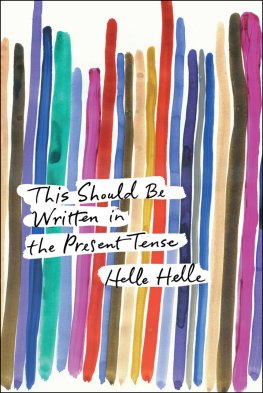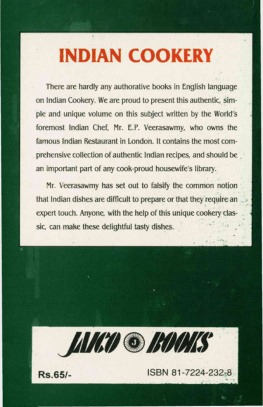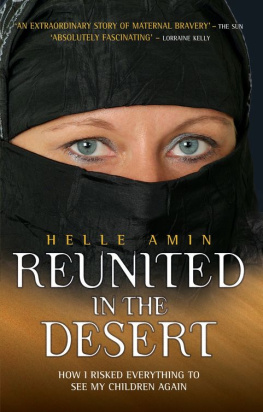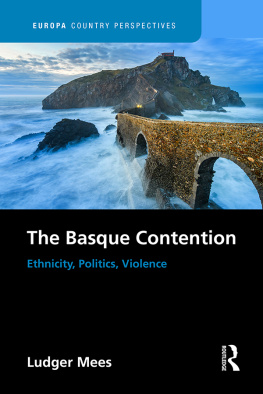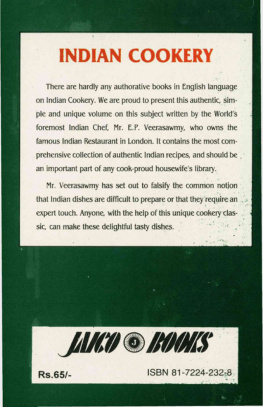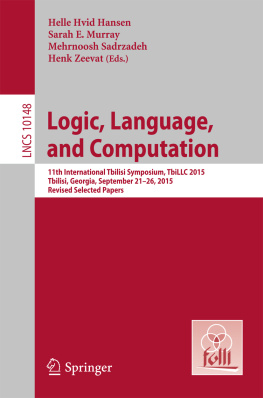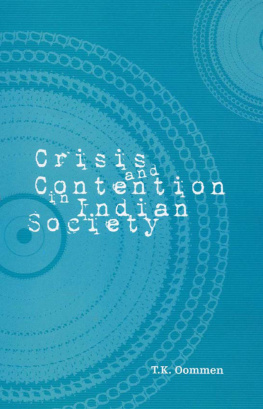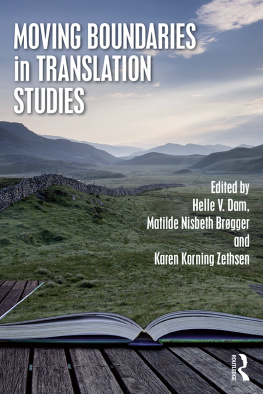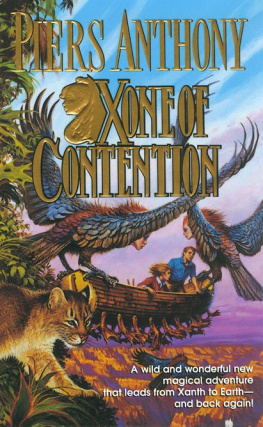INDIAN ART WORLDS IN CONTENTION
NORDIC INSTITUTE OF ASIAN STUDIES
Recent Monographs
63. SURVIVAL AND PROFIT IN RURAL JAVA
Sven Cederroth
64. THE STATE AND ITS ENEMIES IN PAPUA NEW GUINEA
Alexander Wanek
65. MISSION AND TAMIL SOCIETY
Henriette Bugge
66. FOLK TALES FROM KAMMU V: A YOUNG STORY-TELLERS TALES
Kristina Lindell, Jan-jvind Swahn and Damrong Tayanin
67. ISLAM AND POLITICS IN AFGHANISTAN
Asta Olesen
68. EXEMPLARY CENTRE, ADMINISTRATIVE PERIPHERY
Hans Antlv
69. FISHING VILLAGES IN TOKUGAWA JAPAN
Arne Kalland
70. THE HONG MERCHANTS OF CANTON
Weng Eang Cheong
71. ASIAN ENTREPRENEURIAL MINORITIES
Christine Dobbin
72. ORGANISING WOMENS PROTEST
Eldrid Mageli
73. THE ORAL TRADITION OF YANGZHOU STORYTELLING
Vibeke Brdahl
74. ACCEPTING POPULATION CONTROL
Cecilia Nathansen Milwertz
75. MANAGING MARITAL DISPUTES IN MALAYSIA
Sharifah Zaleha Syed Hassan and Sven Cederroth
76. SUBUD AND THE JAVANESE MYSTICAL TRADITION
Antoon Geels
77. FOLK TALES FROM KAMMU VI: A STORY-TELLERS LAST TALES
Kristina Lindell, Jan-jvind Swahn and Damrong Tayanin
78. KINSHIP, HONOUR AND MONEY IN RURAL PAKISTAN
Alain Lefebvre
79. THAILAND AND THE SOUTHEAST ASIAN NETWORKS OF THE VIETNAMESE REVOLUTION, 18851954
Christopher E. Goscha
80. INDIAN ART WORLDS IN CONTENTION
Helle Bundgaard
81. CONSTRUCTING THE COLONIAL ENCOUNTER
Niels Brimnes
82. RELIGIOUS VIOLENCE IN CONTEMPORARY JAPAN
Ian Reader

Nordic Institute of Asian Studies
Monograph Series, No. 80
First published in 1999 by Curzon Press
This edition published 2011 by Routledge
2 Park Square, Milton Park, Abingdon, Oxon OX14 4RN
Simultaneously published in the USA and Canada by Routledge
711 Third Avenue, New York, NY 10017
Routledge is an imprint of the Taylor & Francis Group, an informa business
Typesetting by the Nordic Institute of Asian Studies
Helle Bundgaard 1999
Publication of this book was assisted by a grant from
The Council for Development Research
British Library Catalogue in Publication Data
Bundgaard, Helle
Indian art worlds in contention: local, regional and national discourses on Orissan Patta. (NIAS monograph series no. 80)
1. Painting India Orissa 2.Painting, Indic 3.Art, Indic 4.Art and society India 5.Art and state India
I. Title II.Nordic Institute of Asian Studies
759.954
ISBN 0-7007-0986-X
In memory of Anne Marie
Contents
FIGURES
Colour Plates (between pp. 114 and 115)
The craftsman is not an individual expressing individual whims, but a part of the universe, giving expression to ideals of eternal beauty and unchanging laws, even as do the trees and flowers whose natural and less ordered beauty is not less God given.
(A.K. Coomaraswamy in GOI 1990a)
Coomaraswamy has greatly influenced this centurys writing on Indian art and crafts as can be seen in the work of Kamaladevi Chattopadhyay and Pupul Jayakar, to mention two of the most influential figures in the Indian art establishment after Independence. Coomaraswamys romantic assertions are still used by the Indian government for example in connection with the bestowing of national awards for excellence in craft production. This book is written in the hope that it might contribute, in Alfred Gells words, to the ushering in of a post-Jayakarian phase in which it will no longer be necessary to romanticise the activities of (Indian) craftsmen to see merit in their work.
The book presents my version of events connected with the production and appraisal of paintings over a specific period of time. One of my central concerns has been to convey an impression of the contesting priorities and interests of local painters and their critics. Indian Art Worlds in Contention contains an implicit critique of certain practices of the art elite. It is my hope that nobody will take offence; I am fully aware that art specialists and government officials just as painters have a job to do. A word of warning to the specialist reader: this is not a comprehensive account of patta chitra paintings, nor indeed one of their producers and critics. I have taken the liberty to discuss certain features while ignoring others. The art specialist may have wished for more information on the paintings whereas the sociologist possibly would have preferred less.
The painters who feature in this book without exception wanted me to write a piece about their work, their lives, and problems resulting from the trade of paintings. Some, I know, would have preferred it had I not changed their names which could perhaps be seen as an expression of their very individual whims. I hope, however, that they will forgive me for not wishing to interfere more in their world than I have already done.
This book is based on my Ph.D dissertation, submitted to the University of London in 1994 and examined in 1995. The research on which it is based was funded by a number of institutions: the Danish Foreign Ministry, the Danish Research Academy, the Nordic Institute of Asian Studies (NIAS), Knud Hjgaards Fond, the School of Oriental and African Studies and the University of London Central Research Fund (which also lent me photographic equipment). In a slightly different version, part of were published in a different frame and version in my article Handicraft Awards and Their Changing Significance: A Case Study from Orissa, India, Folk, vol. 38, 1996, pp. 107124.
I am indebted to the staff, who gave me access to and provided me with visual material, at the Museum of Mankind, the British Museum, the Victoria and Albert Museum, the India Office Library, the Ashmolean Museum and the Wellcome Institute in England as well as the Indian Museum, the National Museum, the Gurusaday Museum and the Sir Asutosh Museum in India. In London Elizabeth Sampson kindly let me see her private collection of Orissan paintings and crafts.
On the academic side a number of scholars have been an invaluable source of advice, theoretically as well as practically. I would like to offer my warmest thanks to Chris Pinney for his unfailing inspiration and encouragement as my research supervisor. Thanks are due also to Lionel Caplan, Emma Tarlo, Patricia Uberoi, Arne Kalland, Mark Hobart, Peter van der Veer, Merete Christensen, Eva Gullv, William Radicie and Dinanath Pathy. For very useful comments on my dissertation and recommendations towards its revision I am indebted to Deborah Swallow, Brian Moeran, Lise Skov, Leena Hskuldsson and the late Alfred Gell. For help with the translation and editing of Sanskrit and Oriya terms I thank Hemant Kanitkar, Purna Chandra Mahapatra and Prodeepta Das. Several people have thus greatly influenced the making of this book, but the responsibility for any errors is entirely mine.
During my time in India and England many people were exceedingly kind and helpful: Prasanta (Bubu) Mishra, Smaranika Samantray, Sandhya Das, Chandra Sekhar Rao, Iola and Sukanto Basu, Caroline Woodroffe and Barbara Vossel. I owe special thanks to my families in Denmark and India, along with my friends for their enduring support and the fact that, despite my prolonged absences, they always made me feel that I belonged.



